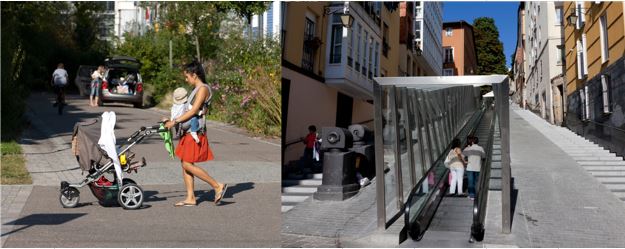Walking is the most basic, democratic and space-efficient form of transport and is open to people of all age groups and socio-economic circumstances. As a mode of transport (as opposed to walking for leisure), walking needs to be considered both as the beginning and end of every trip by any other mode and as a mode of transport itself for short distances.
As the first and last mile option for trips made by other modes, it needs to be taken into consideration in planning. This includes safe and barrier-free public transport stops and stations with good walking access adapted to all ability levels, as well as escalators and elevators for those who cannot manage stairs. In addition, walking must be taken seriously as a mode of transport in itself, with appropriate and equitable amounts of space allocated to it and infrastructure that is safe and attractive for users of all ages, genders and abilities.

A walkable city requires consideration at different levels:
- at the city-wide level: pedestrian axes, reduction of urban cuts, hierarchies of road;
- at the neighbourhood level: traffic calming, parking management, reduction of motor vehicle through traffic;
- at the street/square level: allocation of public space, reduction of speed, access for people with reduced mobility, quality and safety of sidewalks and intersections, comfort (shade, benches, water points, clean and accessible toilets).
Walking interventions can include: exploratory walks, tactical urbanism and living labs, citizen involvement in the design and management of public spaces (co-constructed street furniture), temporary or small-scale measures (temporary car-free areas in front of schools, tourist streets, seasonal furniture and parklets), narrowed crossings (widened sidewalks, kerb bulges, mid-crossing refuge islands).
Comments ()